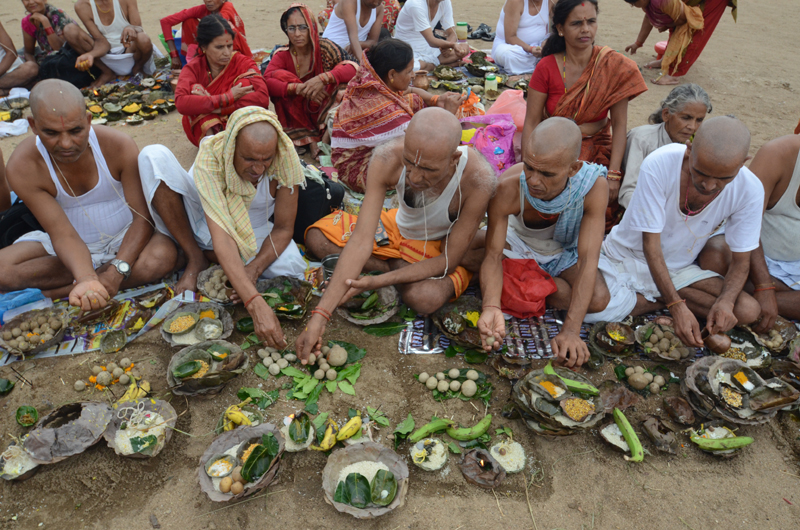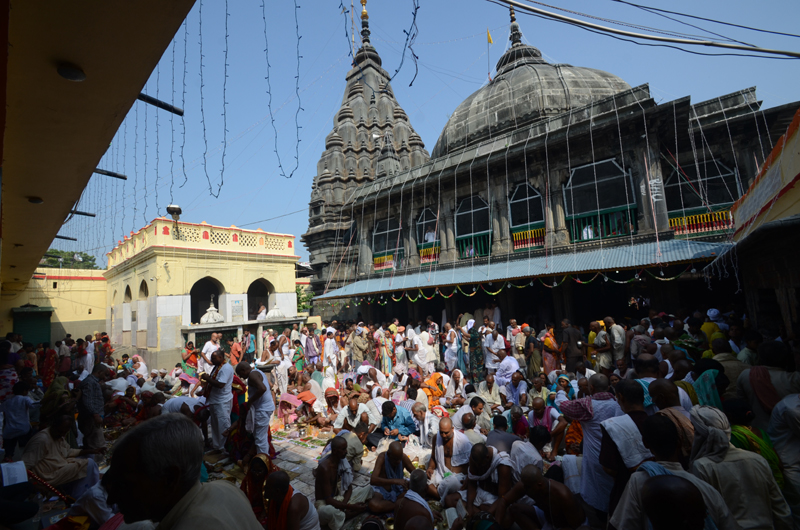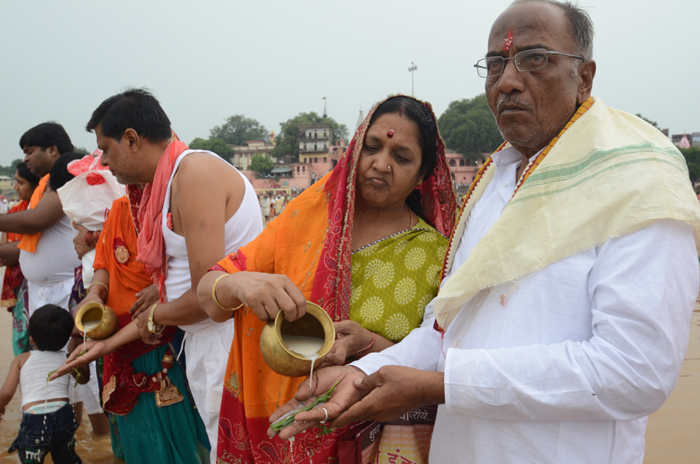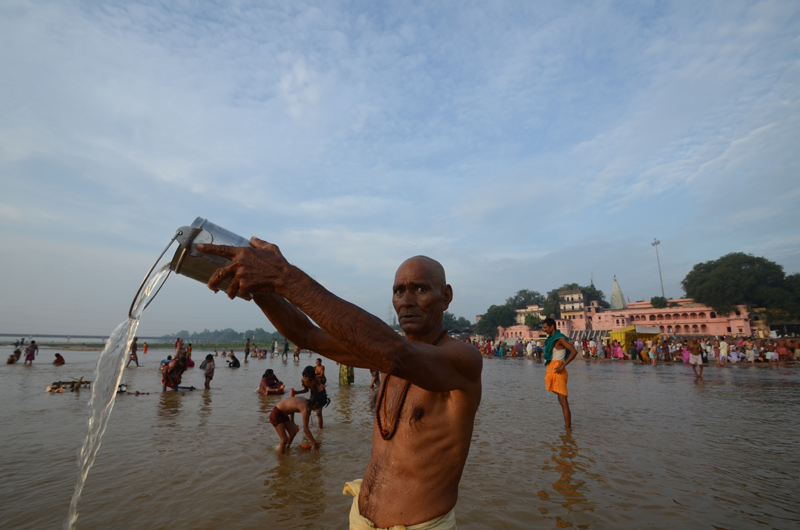Bodhgaya is one of the most important and sacred Buddhist pilgrimage center in the world. It was here under a banyan tree, the Bodhi Tree, Gautama attained supreme knowledge to become Buddha,the Enlightened One. Born; in the foothills of the Himalayas as a Sakya prince of Kapilvastu (now in Nepal), most of the major events of his life, like enlightenment and last sermon, happened in Bihar. Buddhism as a religion was really born in Bihar and evolved here through his preaching and the example of his lifestyle of great simplicity, renunciation and empathy for everything living. Significantly, the state's name of 'Bihar' originated from 'Vihara' meaning monasteries which abounded in Bihar. Several centuries after Buddha's passing away, the Maurya Emperor Ashoka (234-198 BC) contributed tremendously towards the revival, consolidation and spread of the original religion. It is the monasteries, Ashoka built for the Buddhist monks and the pillars known as Ashokan Pillars erected to commemorate innumerable historical sites associated with the Buddha's life, mostly intact to this day, that helped scholars and pilgrims alike to trace the life events and preaching of a truly extraordinary man. There is a magnificent Mahabodhi temple and the Tree from the original sapling still stands in the temple premises. The temple is an architectural amalgamation of many centuries, cultures and heritages. While its architecture has a distinct stamp of the Gupta era, it has later ages inscriptions describing visits of pilgrims from Sri Lanka, Myanmar and China between 7th and 10th century AD. It is perhaps still the same temple Hieuen Tsang visited in 7th century.
What to See :
Mahabodhi Temple
The temple stands in the east to the Bodhi Tree. Its architectural effect is superb. Its basement is 48 square feet and it rises in the form of a slender Pyramid till it reaches its neck, which is cylindrical in shape. The total height of the temple is 170 ft. and on the top of the temple are Chatras which symbolize sovereignty of religion. Four towers on its corners rise gracefully giving the holy structure a poise balance. This sacred edifice is like a grand banner unfurled by time to proclaim to the world the pious efforts of the Buddha to solve the knots of human miseries, to ascend above worldly problems and to attain transcendental peace through wisdom, good conduct and disciplined life.
Inside the temple, in the main sanctum, there is a colossal image of the Buddha in sitting posture touching the earth by his right hand. In this posture the Buddha accomplished the supreme enlightenment. The statue is of black stone but it has been guilder by the devotees. The entire courtyard of the temple is studded with large number of votive stupas. These stupas are of all sizes built during the past 2500 years ago. Most of them are extremely elegant in structural beauty. The ancient railings, which surround the temple, are of the first century BC and are among the very interesting monuments of the century.
Animesh Lochan Chaitya:
It is believed that the Buddha spent one week here looking towards the great Bodhi tree out of gratitude, without twinkling his eyes.
Bodhi Tree:
The present Bodhi Tree is probably the fifth succession of the original tree under which the Buddha had attained enlightenment. Vajrasana, the seat of stability, is a stone platform on which the Buddha is supposed to have sat in meditation gazing east, under the Bodhi tree.
Chankramana:
This marks the sacred spot of the Buddha's meditative perambulations during the third week after pious enlightenment. It is believed that wherever the Buddha put his feet lotus sprang up.
Ratnagarh:
The Buddha spent one week here, where it is believed that five colors came out of his body.
Other Treasures of Bodhgaya:
80 ft Statue of the Buddha, Lotus Tank, Buddha Kund, Rajayatana, Brahm Yoni, Chinese Temple & Monastery, Burmese Temple, Buddhist Monastery of Bhutan, International Buddhist House & Japanese Temple, Thai Temple & Monastery, Tibetan Monastery, Archaeological Museum. Sujata village (2 kms), Dungeshwari Hill (Prag bodhi) (22 kms by road), Maitraya Project (3 kms).
80 ft Statue of the Buddha -
The Great Buddha Statue popularly known as 80’ Buddha Statue was unveiled and consecrated on November 18, 1989 with a ceremony graced with the presence of His Holiness the XIV the Dalai Lama, who blessed the 25-meter statue. It was the first great Buddha statue built in the modern history of India. The statue is situated next to Mahabodhi Temple at Bodhgaya.
Archaeological Museum -
Possess interesting selection of Buddhist and Hindu artifacts from Bodh Gaya and other nearby excavation sites. Museum is generally closed in Fridays.
Thai Monastery
One of the oldest foreign monasteries built in the ornamental regal Thai architectural style. The grandeur of the exterior as well as the interior is utterly awe-inspiring. The temple reflects like a red and golden gem over a calm pool at the front patio. The splendid Buddha idol along with the mural paintings depicting Buddha’s life and some modern events like importance of planting trees painted in a stylized manner are utterly marvelous. It is situated next to Mahabodhi Temple at Bodhgaya.
Sujata Garh / Sujata Village
This ancient stupa is believed to be the place where Gautama Siddhartha meditated following severe penance of fasting before he attained enlightenment. The legend goes as that a village lady, Sujata, offered a bowl of rice pudding when she saw meditating Gautama severely emaciated. Gautama accepted the offer and realized the futility of the self deprivation. After this incident He went to meditate under the Bodhi tree and was enlightened and became the Buddha. It is about 2 kms from Mahabodhi Temple at Bodhgaya.
Dungeshwari Temple / Dungeshwari Hill
Gautama Siddhartha is believed to have meditated at this place for 6 years before he went to Bodhgaya for the final realization. Two small shrines are built to commemorate this phase of Buddha. A golden emaciated Buddha sculpture memorising the rigid penance is enshrined in one of the cave temples and a large (about 6’ tall) Buddha’s statue in the other. A Hindu goddess deity Dungeshwari is also placed inside the cave temple.






